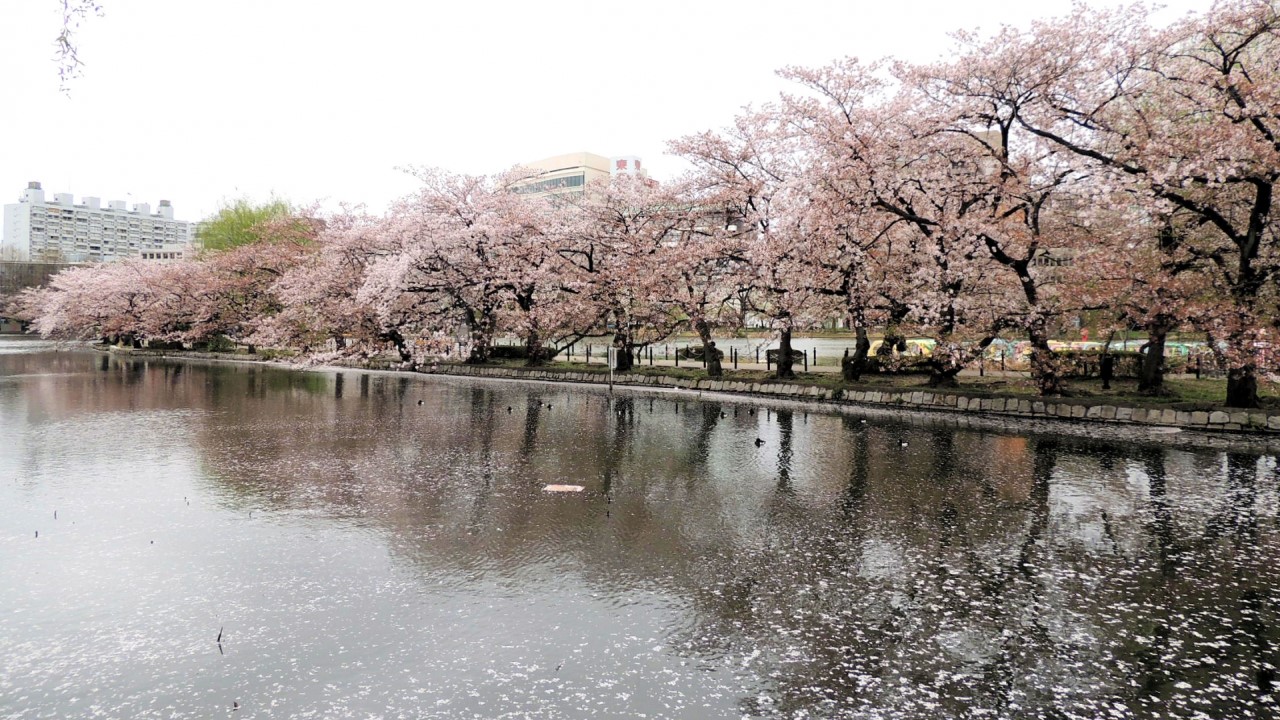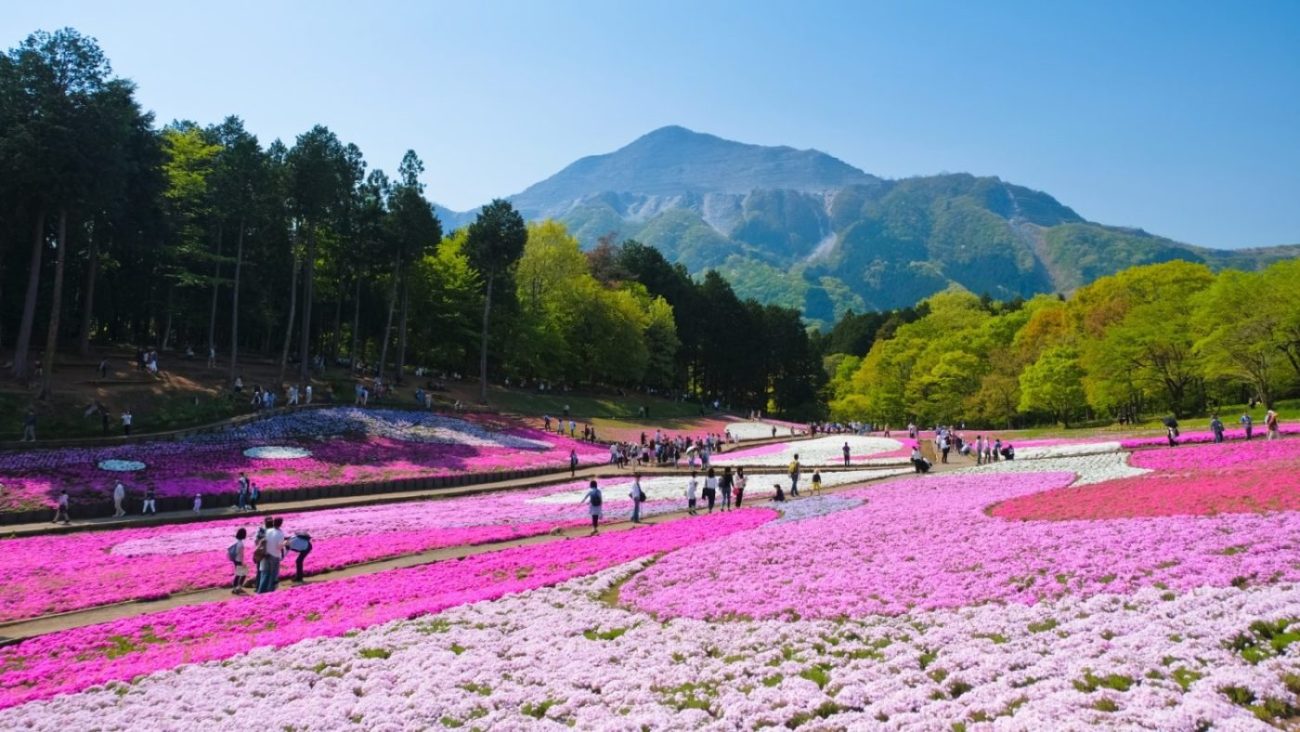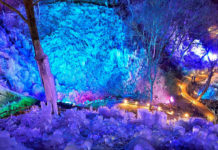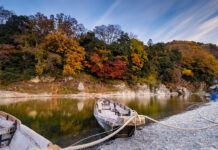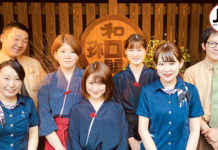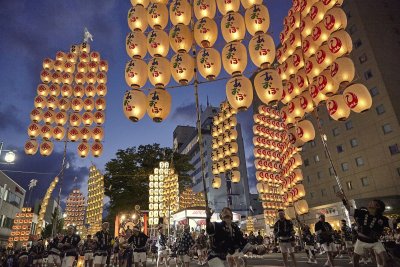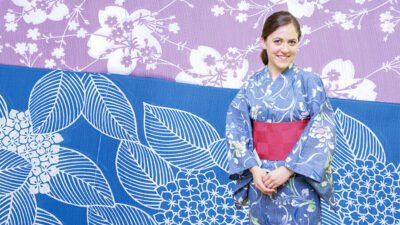If you’re coming to Japan, you’ll be spoiled for choice when picking out Japanese souvenirs to take back home. The country has no end of iconic items: from samurai swords to straw sandals. However, if you’re looking for something a little more aesthetic than a pair of crossed katana for your home, then furin might be the souvenir for you. The name literally means “wind bell” (fu + rin). They look something like Western wind chimes, only far more attractive.
These beautiful Edo-era glass-dome chimes come in thousands of gorgeous designs. Also, there is a rich history behind them. Buying one will bring a feel of Japanese summertime to your yard or bedroom with its calming sound. Let’s look at where these delicate decorations came from, how they’re made, and how you can get your hands on one during your time in Japan.
What Is a Furin Wind Chime?
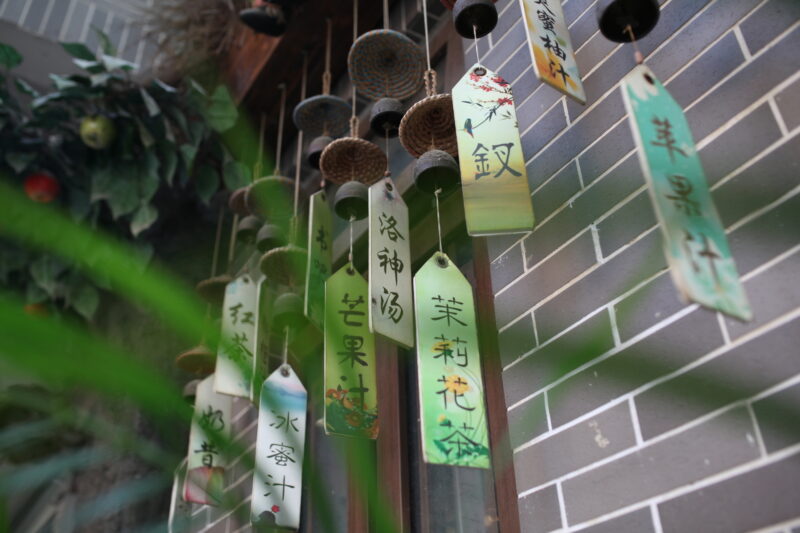
The furin is made of three essential parts: the bowl, the clapper (known as a zetsu), and a paper strip that hangs from the bottom (the tanzaku). The furin sways from the eaves of homes and shops during the summertime. Winds catch the paper tanzaku causing the zetsu to strike the inside of the bowl and let out a calming chime. Nowadays, the bowl is typically made from glass for a high-pitched, otherworldly chime.
It’s believed by some people that this chiming sound actually has a physically cooling effect on the body. Although the science behind that claim might be dubious, it does have an undeniably refreshing quality. Perhaps this is because of its association with the cooling breezes which. What’s more, traditional aesthetic philosophy in Japan argues that the vibrations of the bell represent the harmonies of nature. Additionally, their sounds can ward off sickness and evil spirits.
You may not believe in any of these mystical associations. However, you’ll surely agree that furin are just downright pretty! The inside of the bowls are painted with a range of colorful motifs. You can find anything from cherry blossoms to cartoon characters adorning the sides of these colorful chimes.
To make them, artisan craftsmen heat the glass, blow it into a globe, spin it, then shape it into a bowl. The opening in which the clapper hangs is made during the blowing process. In some prefectures, older iron and bronze styles are still made, with a deeper, metallic sound to them. However, the glass varieties are the most widely prized, and they have been for several centuries.
What’s the History Behind Furin Wind Chimes?
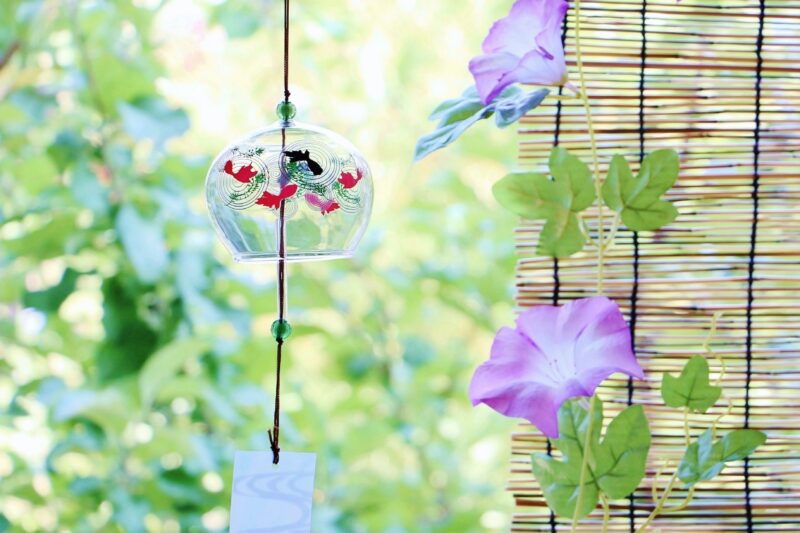
Like many parts of traditional Japanese culture, the furin has its roots in ancient China. They are derived from a kind of divination device — a metal bell called a senfutaku, which the Chinese used to hang in bamboo forests. Based on the direction of the wind and sound of the chimes, they believed they could make predictions about the future.
These curious little devices came to Japan alongside Buddhism. Then, over the following centuries, their form changed from bells to wind chimes. Their purpose also changed from predicting the future to warding off evil spirits. In fact, during the plague-ridden years of the middle ages, wealthy Japanese people would hang these expensive bronze bells from their houses to keep disease at bay. It’s thought that this is one reason we associate the chimes with summer: those hot, muggy months were particularly bad for epidemics.
It wasn’t until the 18th century, when the Dutch introduced glassmaking techniques to Japan, that furin took on their modern-day form. Artisan glassblowers in Nagasaki were the first to sell them, and their rare products were an expensive commodity. In fact, one piece would have been worth thousands of USD today.
Once the art found its way to Edo (old Tokyo) in the 19th century, it became more commonplace. Then the price came right down and glass furin exploded in popularity. It was then that people started the unique Edo trend of painting the inside of the glass. This was to protect the images from wear and tear. And the rest, as they say, is history.
But by now, you’re probably wondering how you can get your hands on some of this history for yourself, right?
Where Can I Buy Japanese Furin Wind Chimes?
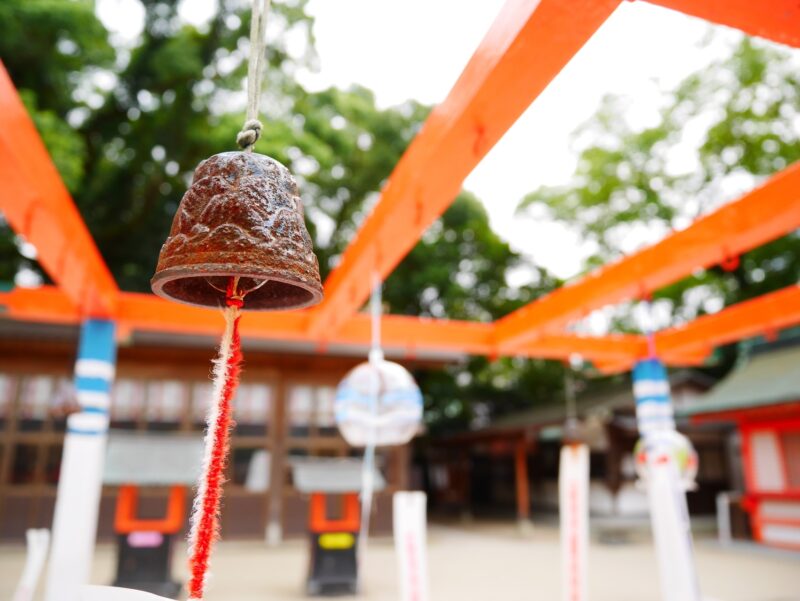
Souvenir Shops
In pretty much every crucial historical district of every city in Japan, you’ll find whole streets lined with souvenir shops. During the summer, these streets will often be filled with the light chime of furin, so just follow the sound to track down the best selection. Even if you’re visiting in the colder months, you should still find a decent range on offer. If you don’t quite know where to look, then Nakamise Shopping Street in Asakusa is a sure bet. Prices at these places can start from as low as 1,000 yen for mass-produced types.
Folk Craft Shops and Museums
If you’re short on time and don’t want to search around the busy tourist districts, then heading along to a folk crafts shop is a great alternative. For example, the Oriental Bazaar in Omotesando, Tokyo sells furin along with a vast range of other items. The same is true of the Kyoto Handicraft Center, located in the historic northeast of the city. Prices here will be higher than at small-time tourist shops, but that’s generally reflected in the quality.
Tokyu Hands
This popular interior design and lifestyle store has outlets around the country. They stock a good range of traditional goods, including furin. Of course, you’ll find the greatest variety on offer during the summer months, but a small range is available year-round. Expect to pay around 2,000 yen and up for a piece here — a great price considering the quality of goods this place offers.
Department Stores
Department stores around Japan are treasure troves of traditional goods. After a day shopping at one of these places, you could be loaded up with every Japanese souvenir under the sun. Stores like Takashimaya can be found throughout the country, often directly attached to train stations. These stores often have seasonal exhibits for traditional crafts, such as at Matsuya Asakusa. If you’re lucky enough to attend one, you’ll have an even bigger range to choose from.
Artisan Workshops
If you’re serious about your souvenirs and want only the best of the best, you should head directly to one of the long-established artisan workshops which produce furin. Shinohara Furin Honpo in east Tokyo, for example, has been in business since 1915! There you can even learn to make your own chime with their masterclass (very reasonably priced at around 3,500 yen for both blowing and painting) or just watch the craftsmen at work for free. If you’re in north Tokyo, then Shinohara Maruyoshi Furin offers the same experiences a little closer to the city center.
Temples and Shrines
Because furin are closely connected to Buddhism, some religious sites around Japan hold festivals dedicated to them throughout the year. If evil spirits really are warded off by these wind chimes, then these festivals are probably the safest places in the world. They typically happen in July and August, at places like Kawagoe Hiwaka Shrine(Saitama), Kawasaki Daishi Temple (Kanagawa), and Ofusa Kannon (Nara). The temple grounds will be filled with chiming furin for weeks or months on end, and you can often get the chance to buy one for yourself at the shops attached.

Writer: Callum Howe
Hi everyone! I’m a freelance writer from sunny Scotland with a love of history, literature, and techno. It’s been around 7 years since my first trip to Japan and life hasn’t been quite the same since. For the past 2 years I’ve been living and working in Tokyo. Through my writing I hope to share with you my fascination for this always interesting, often bizarre country.
*Disclaimer:
This article was written by an outside writer, and WAttention is not responsible for any damage caused by the information on this page. Please be aware that the accuracy of the information posted in this article is not guarantied, and the content may be changed without notice.
 0
0


